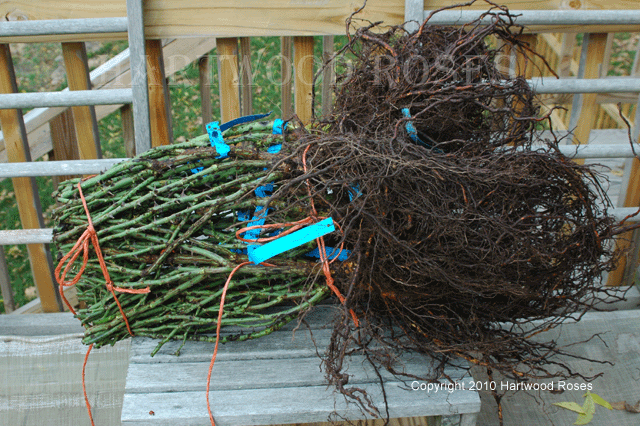If the roses I showed at Big Lots are poor examples, what do good bare root roses look like?
I'll show you some photos so you can see for yourself.
Here are two bagged roses, bought from Home Depot last year. The Grade #1 on the label means that each rose has 3 or more good-sized canes. The grade designation has nothing to do with the health or condition of the rose.
This is what the roses looked like when I removed them from the package:
See how most of the roots had to be chopped off so the rose would fit into the colorful little plastic bag?
This is what a bare root rose is supposed to look like:
Healthy canes ... profuse roots ... this rose is beautiful.
Here was my entire order before I tied it. 12 roses, carefully bundled and wrapped in a large plastic bag so they wouldn't dry out. What a contrast!
In the interest of full disclosure, I have to tell you that the bagged roses and the Canadian roses are budded onto different rootstocks.
The bagged roses are on Dr. Huey, the most prevalent rootstock out there, which grows well in the rose production fields in Texas and California, but is lousy in the acid, clay soil here in Virginia. You all would recognize Dr. Huey ... he's that dark red, once blooming rose that you get when your rose's graft dies? (I once heard it called the most popular rose in America ... and not in a good way.)
Palatine Roses
Pickering Nursery
Got Questions? I'll be happy to answer them.
(written by Hartwood Roses. Hartwood Roses blog.)














